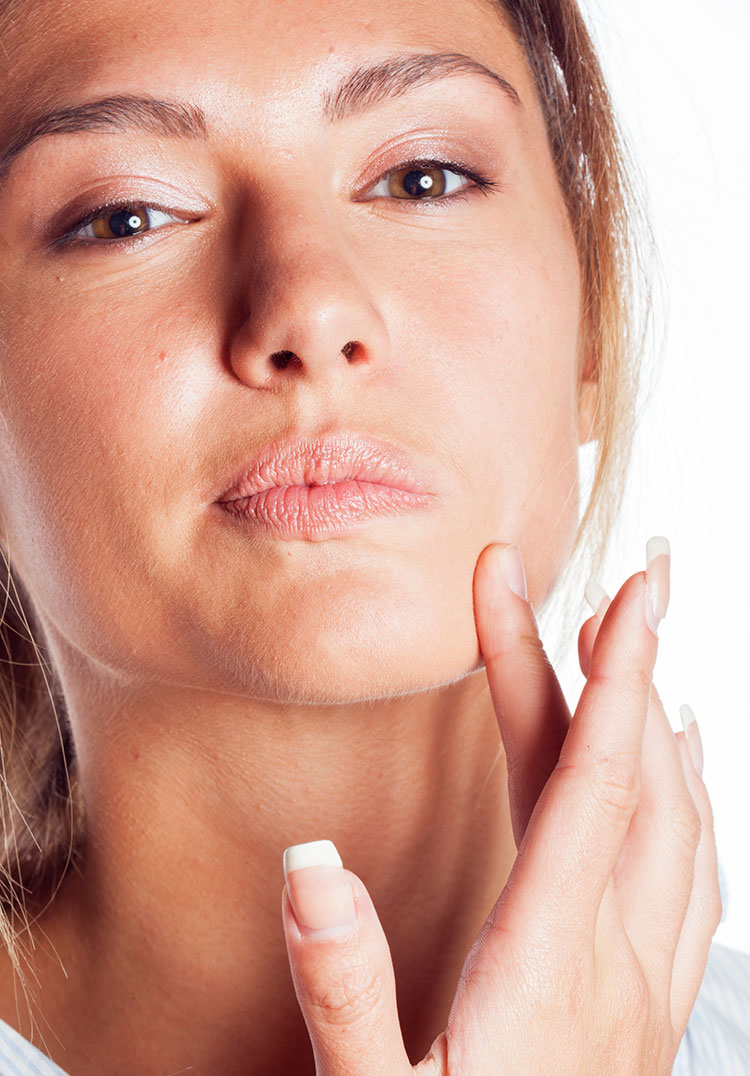Pimples, breakouts and wrinkles… oh my! Yes, adult acne is so unfair, but stand by – help is at hand.
If you’re well past your teens and still have acne – you’re not alone. It’s somewhat expected to have a pimply face when you’re still in school but when you’re a respectable grown-up with responsibilities, it can be much more difficult to accept. What makes matters worse is that you’ll often be seeing pimples and wrinkles together – which surely must be a cruel joke on the part of the universe. Pimples are caused when the oil-producing glands that keep our skin healthy start working overtime and are often a symptom of something else happening in the body. Factors such as stress, hormones and diet can all play a part. Trouble is, everyone is different, so curing one person’s acne problems won’t necessary cure yours. We sought advice from The Face Place to find the best way to battle breakouts.
Step one
Visit a professional: It sounds so simple but a lot of people avoid going to a dermatologist mostly due to two factors – time and money. Trust us, a visit will be worth it. A qualified professional will usually first take you through a consultation and will ask you a whole bunch of questions. Because a lot of adult acne is hormonal you’ll likely be asked whether you’re on the pill and whether you have polycystic ovaries as these will both affect your hormones and therefore your skin.
Try: The Face Place Warrant of Fitness (WOF), $99. This consultation fee is credited towards any products purchased on the day.
Step two
Change your skincare regime: As we age our skin produces fewer nutrients, leading to dehydrated skin. And it’s this issue that can create a hardened skin surface, which can cause blockages and acne. “Generally most people believe acne is due to an excess of oil in the skin and treat it by using agents that strip and dry the skin, rather than providing the skin with the extra nutrition it needs. Oil can be a contributing factor, but more so in teenage acne,” says The Face Place’s Lauren Harding. She believes for best results you need to provide the skin with topical nutrition using appropriate serums like vitamin A, C and antioxidants.
Try: For Vitamin A: Osmosis Calm Serum, $134: This one will work to calm redness, restore the protective barrier, rebuild thinned dermis, normalise oil, clear acne, and hydrate. Internally: Osmosis Harmonized H20 Anti-T Water, $66: This one is a bit different from your traditional beauty products because you spray five pumps onto your tongue twice a day. The theory is that the harmonised water communicates with cells that are imbalanced in an effort to restore them. It works well for ovarian concerns, which are often linked
to acne.
Step three
Peels: Light to medium peels are a great way to help clear the skin of acne. The type of peel you get will depend on your acne issues; however, one consistent part of a peel for acne is vitamin A. It feeds the skin with the nutrition it needs. The main objective of a peel is to optimise skin cell health, which will help to regulate oil and hydration, giving skin the ability to ‘clear’ itself. The best part? These peels are not too harsh so you can be in and out in your lunch break.
Try: Aspect Dr Peel, from $155.
Step four
Light therapy: Omnilux LED light treatments use UV-free light to reduce inflammation and improve healing in the skin –perfect for women with acne. The lights are either blue or red and work differently depending on your type of acne. “The blue light helps your body recognise and destroy the acne-causing bacteria, while the infra-red light works to reduce inflammation,” says Harding.
Try: Omnilux, $125, for each treatment.
So long, sugar
One thing that could be having the biggest effect on your skin is actually found in your kitchen cupboards. That’s right, sugar could be undermining all the good work you do for your face. The Face Place’s Lauren Harding says “Sugar and simple carbohydrates (like bread and milk) are the biggest offenders in contributing to acne. Most skin conditions are associated with at least some low-level inflammation and sugars exacerbate inflammation.” So give it a good go and cut out those refined sugars from your diet.











